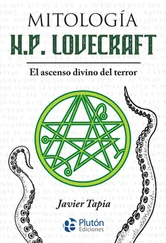We got to know our new neighbors. There were the Picketts, Nelson, who’d played tackle for Georgia Tech and now worked for Parke-Davis, the pharmaceutical company, and his wife, Bonnie, who was always reading the miraculous tales in Guideposts . Across the street was Stew “Bright Eyes” Fiddler, an industrial parts salesman with a taste for bourbon and barmaids, and his wife, Mizzi, whose hair changed color like a mood ring. At the end of the block were Sam and Hettie Grossinger, the first Orthodox Jews we’d ever met, and their only child, Maxine, a shy violin prodigy. Sam, however, was funny, and Hettie was loud, and they talked about money without thinking it was impolite, and so we felt comfortable around them. Milt and Tessie often had the Grossingers over to dinner, though their dietary restrictions continually baffled us. My mother would drive all the way across town to buy kosher meat, for instance, only to serve it with a cream sauce. Or she would skip the meat and cream altogether and serve crab cakes. Though faithful to their religion, the Grossingers were midwestern Jews, low-key and assimilationist. They hid behind their wall of cypresses and at Christmas put up a Santa Claus along with lights.
In 1971: Judge Stephen J. Roth of the U.S. District Court ruled that de jure segregation existed in the Detroit school system. He immediately ordered the schools to be desegregated. There was only one problem. By 1971 the Detroit student population was 80 percent black. “That busing judge can bus all he wants,” Milton crowed, reading about the decision in the paper. “Doesn’t make any difference now. You see, Tessie? You understand why your dear old husband wanted to get the kids out of that school system? Because if I didn’t, that goddamn Roth would be busing them to school in downtown Nairobi, that’s why.”
In 1972: Five-foot five-inch S. Miyamoto, rejected by the Detroit police force for failing to meet the five-foot seven-inch requirement (he had tried elevator heels, etc.), appeared on The Tonight Show to plead his case. I wrote a letter to the police commissioner myself in support of Miyamoto, but I never received a reply, and Miyamoto was rejected. A few months later, Police Commissioner Nichols was thrown from his horse during a parade. “That’s what you get!” I said.
In 1972: H. D. Jackson and L. D. Moore, who had brought a police brutality case for four million dollars, hijacked a Southern Airways jet to Cuba, outraged at being awarded damages in the amount of twenty-five dollars.
In 1972: Mayor Roman Gribbs claimed that Detroit had turned around. The city had overcome the trauma of the ’67 riots. Therefore, he wasn’t planning on running for another term. A new candidate appeared, the man who would become the city’s first African American mayor, Coleman A. Young.
And I turned twelve.
A few months earlier, on the first day of sixth grade, Carol Horning came into class wearing a slight but unmistakably self-satisfied smile. Below this smile, as if displayed on a trophy shelf, were the new breasts she had gotten over the summer. She wasn’t the only one. During the growing months, quite a few of my schoolmates had—as adults liked to say—“developed.”
I wasn’t entirely unprepared for this. I’d spent a month the previous summer at Camp Ponshewaing, near Port Huron. During the slow march of summer days I was aware, as one is aware of a drum steadily beating across a lake, of something unspooling itself in the bodies of my campmates. Girls were growing modest. They turned their backs to dress. Some had surnames stitched onto not only shorts and socks but training bras, too. Mostly, it was a personal matter that no one spoke about. But now and then there were dramatic manifestations. One afternoon during swimming hour, the tin door of the changing room clanged open and shut. The sound caromed off the trunks of pine trees, carrying past the meager beach out over the water, where I floated on an inner tube, reading Love Story . (Swimming hour was the only time I could get any reading done, and though the camp counselors tried to motivate me to practice my freestyle, I persevered every day in reading the new bestseller I’d found on my mother’s night table.) Now I looked up. Along a dusty brown path in the pine needles, Jenny Simonson was advancing in a red, white, and blue swimsuit. All nature grew hushed at the sight. Birds fell silent. Lake swans unfurled tremendous necks to get a glimpse. Even a chainsaw in the distance cut its engine. I beheld the magnificence of Jenny S. The golden, late afternoon light intensified around her. Her patriotic swimsuit swelled in ways no one else’s did. Muscles flexed in her long thighs. She ran to the end of the dock and plunged into the lake, where a throng of naiads (her friends from Cedar Rapids) swam over to meet her.
Lowering my book, I looked down at my own body. There it was, as usual: the flat chest, the nothing hips, the forked, mosquito-bitten legs. Lake water and sun were making my skin peel. My fingers had gotten all wrinkly.
Thanks to Dr. Phil’s decrepitude and Tessie’s prudishness, I arrived at puberty not knowing much about what to expect. Dr. Philobosian still had an office near Women’s Hospital, though the hospital itself had been closed down by then. His practice had changed considerably. There were a few remaining elderly patients who, having survived so long under his care, were afraid to change doctors. The rest were welfare families. Nurse Rosalee ran the office. She and Dr. Phil had been married a year after they met delivering me. Now she did the scheduling and administered shots. Her Appalachian childhood had acquainted her with government assistance, and she was a whiz with the Medicaid forms.
In his eighties, Dr. Phil had taken up painting. His office walls were covered salon-style with thick, swirling oils. He didn’t use a brush much, mainly a palette knife. And what did he paint? Smyrna? The quay at dawn? The terrible fire? No. Like many amateurs, Dr. Phil assumed that the only proper subject for art was a picturesque landscape that had nothing to do with his experience. He painted sea vistas he’d never seen and forest hamlets he’d never visited, complete with a pipe-smoking figure resting on a log. Dr. Philobosian never talked about Smyrna and left the room if anyone did. He never mentioned his first wife, or his murdered sons and daughters. Maybe this was the reason for his survival.
Nevertheless, Dr. Phil was becoming a fossil. For my annual physical in 1972 he used diagnostic methods popular back in medical school in 1910. There was a trick where he pretended to slap me in the face to check my reflexes. There was an auscultation accomplished with a wineglass. When he bent his head to listen to my heart I was treated to an aerial view of the Galápagos of scabs on his bald pate. (The archipelago changed position from year to year, continentally drifting across the globe of his skull but never healing.) Dr. Philobosian smelled like an old couch, of hair oil and spilled soup, of unscheduled naps. His medical diploma looked as if it were written on parchment. I wouldn’t have been surprised if, to cure fever, Dr. Phil had written out a prescription for leeches. He was correct with me, never friendly, and directed most of his conversation to Tessie, who sat in a chair in the corner. What memories, I wonder, was Dr. Phil avoiding in not looking at me? Did the ghosts of Levantine girls haunt those cursory checkups, suggested by the fragility of my collarbone, or the birdcall of my small, congested lungs? Was he trying not to think of water palaces and loosened robes, or was he just tired, old, half-blind, and too proud to admit it?
Whatever the answer, year after year, Tessie faithfully took me to him, in repayment for an act of charity during a catastrophe he would no longer acknowledge. In his waiting room I encountered the same tattered Highlights magazine every visit. “Can you find these?” the puzzle asked inside. And there in the spreading chestnut tree were the knife, the dog, the fish, the old woman, the candlestick—all circled by my own hand, shaky with earache, years and years before.
Читать дальше
Конец ознакомительного отрывка
Купить книгу












